HMAS Penguin is of exceptional heritage and historic interest in that it is a fine example of a purpose built Naval training and hospitalisation complex erected in 1940-45 during the Second World War.
The primary group of more than 12 buildings, mostly erected in 1942-45 continue in service today as one of the RAN’s training and support establishments.
The largely weatherboard and brick buildings in the bush setting of the Middle Harbour foreshore were designed with a consistent stylistic theme. The main complex includes a hospital and barracks style accommodation of one to three storeys.
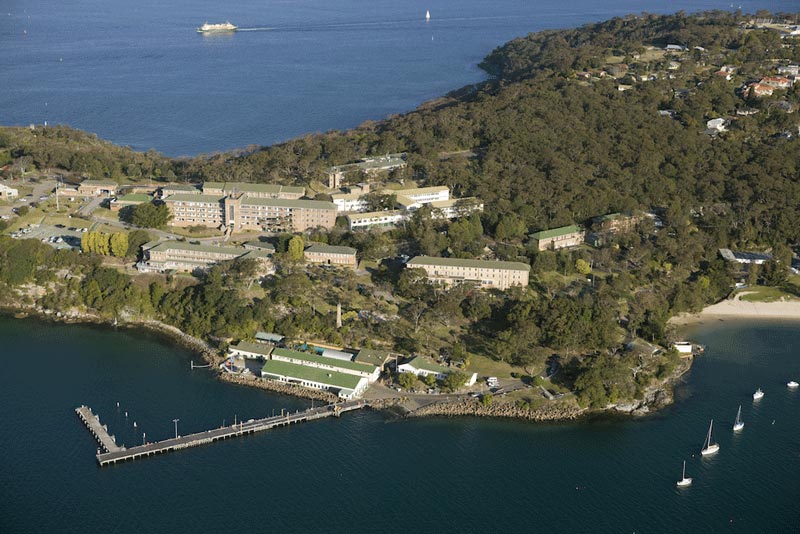
History
The history of Defence use of land on Middle Head and Georges Heights dates back to the early 1800s when any threat to Sydney was seen as coming from the sea. The history of the construction of gun batteries and other defence facilities in this area is available from the Department of Environment and Energy.
The land on which HMAS Penguin is located, near Middle Head and Georges Heights headland, was set aside for defence purposes before 1870 for the strategic defence of Sydney Harbour. It covers an area of approximately 14.2 hectares.
Following Federation in 1901, Defence became the responsibility of the Commonwealth of Australia.
Most defence works on Georges Heights, Middle Head and South Head were completed in 1903. The Clifton Estate at Chowder Bay, (the former ‘Mosman Septic Tank’ later a swimming pool) remained in private hands until resumed by the Commonwealth in 1940 for Navy.
HMAS Penguin developed rapidly. Training schools were established from 1951 to 1964 when it was the main submarine base in Sydney Harbour. The Diving and Hydrographic Survey teams continue to be housed there.
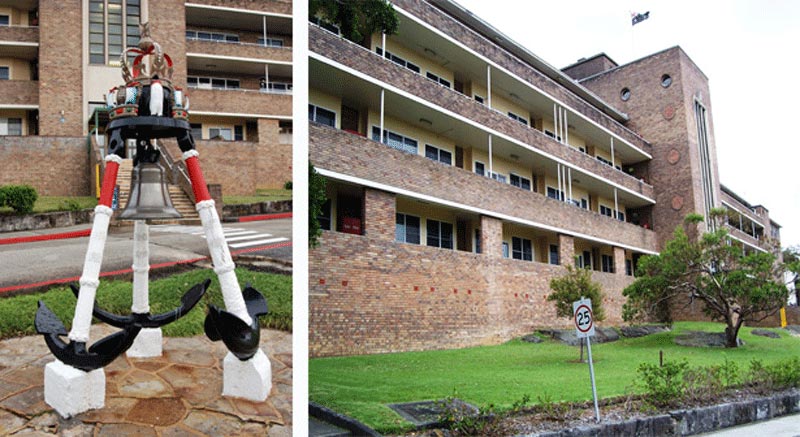
Earlier Ships Named Penguin
Ships named Penguin have served Australia since 1877.
HMAS Penguin (I)
The first Penguin was a composite sloop that first commissioned in the Royal Navy in 1877. It later served on the Australia Station as a survey ship and from 1909 to 1923 as a Depot Ship berthed at Garden Island, Sydney.
HMAS Penguin (II)
Penguin (II) was the former light cruiser HMAS Encounter, part of the Australian Fleet that entered Sydney Harbour for the first time on 4 October 1913. Encounter was renamed Penguin(II) on 1 January 1923 and assumed responsibilities as the Navy’s depot and accommodation ship at Garden Island. She was paid-off for disposal on 15 August 1929.
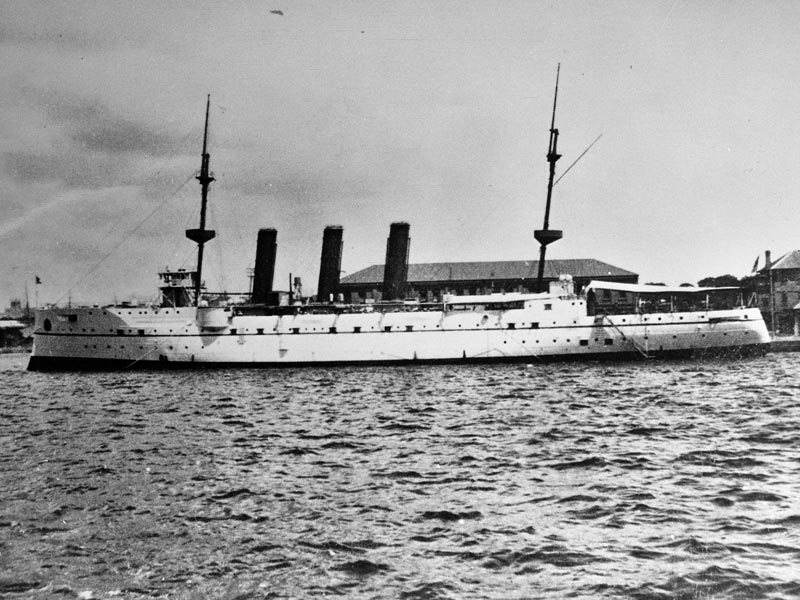
HMAS Penguin (III)
Penguin (III) began service as HMAS Platypus (I), a Submarine and Destroyer Tender and Fleet Repair Ship. HMAS Platypus (II) commissioned as HMAS Penguin (III) on 16 August 1929 and became the new depot and accommodation ship at Garden Island. The ship continued in this role until 26 February 1941 when, recommissioned HMAS Platypus it resumed sea service as a Training Ship.
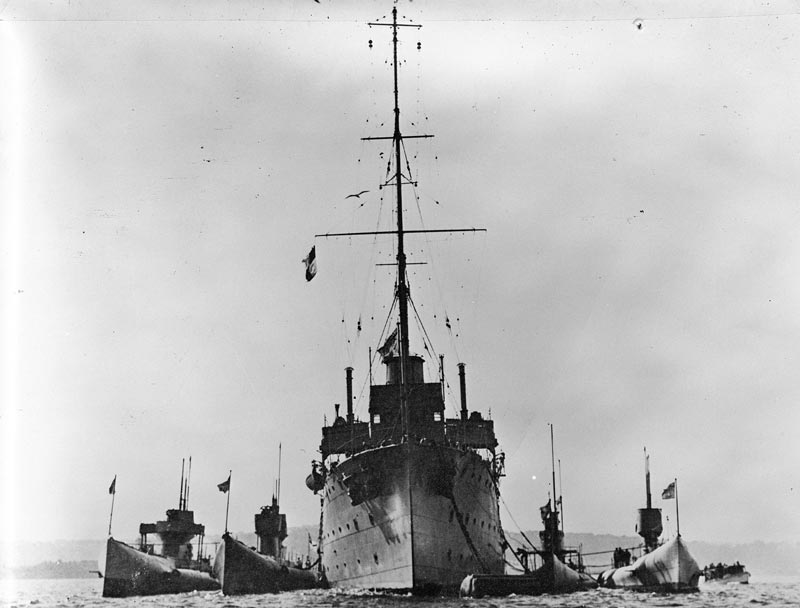
HMAS Penguin (IV)
In 1941, construction of the establishment at Balmoral began. The depot, designed to provide sleeping accommodation for 700 men with necessary administration, support offices and recreational facilities also included the Balmoral Naval Hospital. It was commissioned as HMAS Penguin (IV) on 14 July 1942.
Training and Support Activities
Naval Hospital
On commissioning Penguin was the home of the Balmoral Naval Hospital and served as a convalescence centre and as base for the Fairmile B Motor Launches that patrolled Sydney Harbour. After the war, it became the main demobilization base for the Navy. The Balmoral Naval Hospital closed down in October 2006 and Penguin now provides a small Medical Centre for RAN personnel.
Seamanship School
Between 1945-1974, Penguin was home to the RAN Seamanship School. HMAS Countersink, a damage control simulator, built from scrap recovered from the battle-damaged HMAS Australia and HMAS Hobart. The facility was constructed on site and remained in use well into the 1980s as part of the Nuclear, Biological and Chemical Defence School. The facility was used to train officers and sailors in battle damage repair techniques and procedures.
Submarine Base
Between 1948-1967, HMAS Penguin was home to the Royal Navy’s Fourth Submarine Squadron before the First Australian Submarine Squadron was formed in 1968 and home-ported at HMAS Platypus, Neutral Bay.
National Service Recruit School
During the period of National Service, 1951-1954, Penguin housed the RAN National Service Recruit School.
Hydrographic School
In the early 1960s, the RAN Hydrographic School was established at Penguin.
RAN Diving School and the Submarine and Underwater Medicine Unit
With the departure of the Submarine Squadron, the RAN Diving School and the Submarine and Underwater Medicine Unit relocated to Penguin.
Clearance Diving Team 2
In mid-1968, Clearance Diving Team 2, which was formed at HMAS Rushcutter in 1966, was transferred to Penguin.
RAN Staff College
From 1979-2000, the RAN Staff College was based at HMAS Penguin before moving to Canberra at the end of 2000 to collocate with the other Service Staff Colleges.
Security and Naval Police Coxswains School
In the 1990s, the Security and Naval Police Coxswains School operated out of Penguin before relocating to Holsworthy in 2000 as part of a new Military Police Training Centre.
Navy Cadets
From 1999-2009, the State Headquarters of the Australian Navy Cadets was situated at Penguin.
Other occasional residents at Penguin have included the RAN Band, Clearance Diving Team 1 and the Navy Sailing Centre.
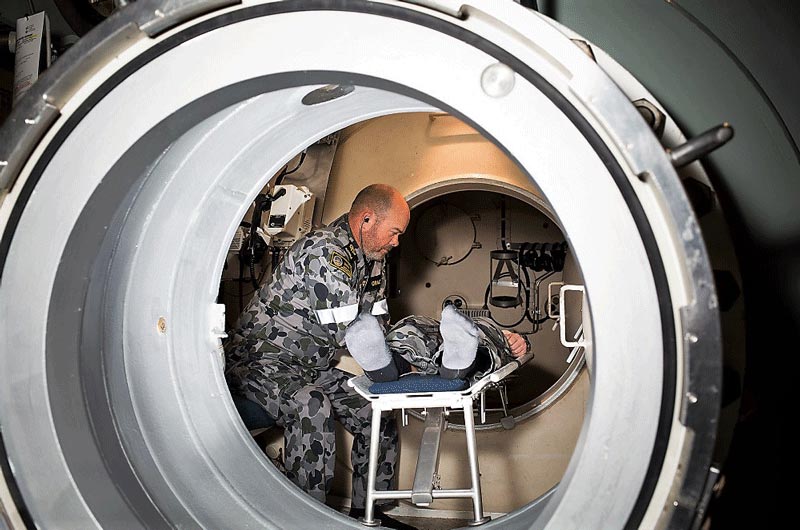
Further Reading
HMAS Penguin: National Heritage Database
HMAS Penguin: Royal Australian Navy, Sea Power Centre



